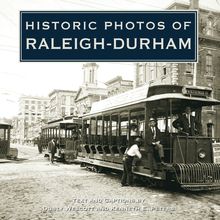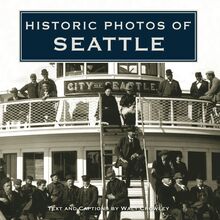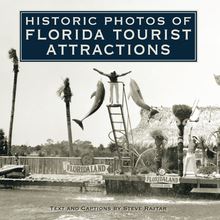Historic Photos of Delaware , livre ebook
191
pages
English
Ebooks
2008
Vous pourrez modifier la taille du texte de cet ouvrage
Obtenez un accès à la bibliothèque pour le consulter en ligne En savoir plus
Découvre YouScribe en t'inscrivant gratuitement
Découvre YouScribe en t'inscrivant gratuitement
191
pages
English
Ebooks
2008
Vous pourrez modifier la taille du texte de cet ouvrage
Obtenez un accès à la bibliothèque pour le consulter en ligne En savoir plus
Publié par
Date de parution
01 mai 2008
Nombre de lectures
4
EAN13
9781618586216
Langue
English
Poids de l'ouvrage
7 Mo
Delaware, the First State, has always been a vibrant reflection of early American history. Historic Photos of Delaware captures more than a century of the evolution of this great state using an impressive collection of beautiful, rare photographs.
From the celebratory dedications of the Chesapeake Bay and Delaware Memorial bridges to the allure of the Delaware beach communities and the rolling hills of Sussex and Kent counties, Historic Photos of Delaware captures the unique geography, landmarks, and historical events that have shaped the state.
This gorgeous book contains nearly 200 black-and-white photographs drawn from the state’s most prominent archives. Historic Photos of Delaware provides a compelling look into the past and will appeal to longtime residents and history buffs alike.
Publié par
Date de parution
01 mai 2008
Nombre de lectures
4
EAN13
9781618586216
Langue
English
Poids de l'ouvrage
7 Mo
HISTORIC PHOTOS OF
DELAWARE
T EXT AND C APTIONS BY E LLEN R ENDLE
The tugboat John J. Hagan and the canal boat Bloomington travel along the busy Delaware River around 1901. The United States government undertook what it called the Project of 1885 to deepen and widen the shipping lanes of the Delaware River from Philadelphia to the Delaware Bay, making the channel 26 feet deep and 600 feet wide.
HISTORIC PHOTOS OF
DELAWARE
Turner Publishing Company
200 4th Avenue North Suite 950
Nashville, Tennessee 37219
(615) 255-2665
www.turnerpublishing.com
Historic Photos of Delaware
Copyright 2008 Turner Publishing Company
All rights reserved.
This book or any part thereof may not be reproduced or transmitted in any form or by any means, electronic or mechanical, including photocopying, recording, or by any information storage and retrieval system, without permission in writing from the publisher.
Library of Congress Control Number: 2008901713
ISBN-13: 978-1-59652-440-8
Printed in China
08 09 10 11 12 13 14 15-0 9 8 7 6 5 4 3 2 1
C ONTENTS
A CKNOWLEDGMENTS
P REFACE
T HE R AILROADS B RING I NDUSTRY (1860 S -1899)
A N EW C ENTURY (1900-1919)
I NFLUENCES FROM B EYOND THE B ORDER (1920-1945)
D ELAWARE IN THE P OSTWAR E RA (1946-1970 S )
N OTES ON THE P HOTOGRAPHS
Photographer John Vachon traveling through Dover captured this moment of time in July 1938. Years of suffering through the Great Depression seem to be written on the boys faces.
A CKNOWLEDGMENTS
This volume, Historic Photos of Delaware , is the result of the cooperation and efforts of many individuals and organizations. It is with great thanks that we acknowledge the valuable contribution of the Delaware Historical Society and the Library of Congress for their generous support.
The author would like to thank her parents for introducing her to history and allowing her to study what she wanted to study, where she wanted to study it-even 900 miles from home. She would also like to thank her husband, John, for his continuing support. Finally, thanks to countless Delawareans who have worked to build the photograph collections at the Delaware Historical Society through the years. They are rich with historical moments, private memories, and enlightening depictions of the state s history.
P REFACE
The history of Delaware has been captured in thousands of photographs that reside in archives, both locally and nationally. This book began with the observation that, while those photographs are of great interest to many, they are not easily accessible. The area today is home to many residents, new and old, who are curious about the local history, especially as the streetscapes and individual buildings associated with that history sometimes seem to be in the way of progress. Many people are asking how to treat these remnants of the past. The decisions made affect every aspect of the urban environment-architecture, public spaces, commerce, infrastructure-and these, in turn, affect the ways that people live their lives. This book seeks to provide decision makers-citizens and officials-a valuable, objective look into the history of Delaware s towns, cities, and rural areas through photographs of the state.
Although the photographer can make decisions regarding subject matter and how to capture and present it, photographs, unlike words, seldom interpret history subjectively. This lends them an authority that textual histories sometimes fail to achieve, and offers the viewer an original, untainted perspective from which to draw his own conclusions, interpretations, and insights.
This project represents countless hours of research. The editors and writer have reviewed thousands of photographs in numerous archives. We greatly appreciate the generous assistance of the organizations listed in the acknowledgments, without whom this project could not have been completed.
The goal in publishing this work is to provide broader access to these extraordinary images, to inspire, furnish perspective, and evoke insight that might assist those who are responsible for determining the future of the great state of Delaware. In addition, we hope that the book will encourage the preservation of the past with adequate respect and reverence.
With the exception of cropping images where needed and touching up imperfections that have accrued over time, no other changes have been made. The caliber and clarity of many photographs are limited by the technology of the day and the ability of the photographer at the time they were made.
The book is divided into four eras. The selection begins with images from the nineteenth century. The second section spans the first decades of the twentieth century, when the region grew as both an industrial and a vacation center. Section Three covers the period between the end of World War I to the end of World War II. Section Four continues the story from the postwar years to the early 1970s.
In each of these sections we have made an effort to capture various aspects of life through our selection of photographs. People, commerce, industry, recreation, transportation, infrastructure, and religious and educational institutions have been included to provide a broad perspective.
We encourage readers to reflect as they visit Delaware s many historic sites, enjoy the beaches and parks, and experience the amenities of this bustling state fronting the Atlantic Coast. It is the publisher s hope that in utilizing this work, longtime residents will learn something new and that new residents will gain a perspective on where the state has been, so that each can contribute effectively to its future.
-Todd Bottorff, Publisher
This unusual view, probably recorded around 1865, shows Old Swedes Church in Wilmington as seen from the southeast. Old Swedes is the nation s oldest church building still standing as originally built. It is still in regular use for worship.
T HE R AILROADS B RING I NDUSTRY
(1860 S -1899)
Delawareans could not have foreseen all the changes to come as the Industrial Revolution (1820-1870) took hold of the nation. Throughout its early history, Delaware remained predominantly rural, but a system of railroads and canals connected the state to Philadelphia, Pennsylvania, as the nineteenth century advanced. Quick, affordable access to markets by way of the Chesapeake and Delaware Canal, completed in 1829, and the Philadelphia, Wilmington and Baltimore Railroad, completed in 1838, excited businessmen and brought new opportunities. Barge transportation was cheap and convenient for the Wilmington-based shipping firms making daily trips to Philadelphia. Manufacturing expanded along the Christina and Brandywine rivers. By 1890, Wilmington was a factory town.
Wilmington s skilled work force had built and maintained the Brandywine mills, and its businessmen had accumulated considerable venture capital. Well positioned to accept new opportunity, capitalists used new technologies to build an industrial, urban culture. Of the state s total population of 78,085, Wilmington accounted for 8,367. In the decades from 1840 to 1890, Wilmington s population increased by a factor of seven while the state s population doubled.
Railroad car construction and shipbuilding became Wilmington s largest industries. By 1865, Delaware s four biggest companies-Harlan and Hollingsworth, Pusey and Jones, the Lobdell Car Wheel Company, and Jackson and Sharp-manufactured railroad equipment. Carriage-making and tanneries also employed large work forces. Before the Civil War there were seven times as many farm workers as factory workers, but by 1900 more men worked in manufacturing than on farms. The new work force included farm boys who moved to the city, an increasing number of African Americans, and a steady influx of immigrants.
In 1856, the Delaware Railroad connected Seaford and Wilmington, and soon Kent County acreage under cultivation increased by 25 percent as farmers switched from raising grains to perishable foodstuffs. For the first time, towns located along the railroad grew faster than port towns.
Politically, the national division over slavery and the secession of Southern states from the Union divided Delawareans geographically and emotionally. In 1860, the state s slave population was under 1,800, but slavery was legal and the governor contemplated joining the Confederacy. In the end, Delaware became a border state. Twelve thousand Delaware men joined the Union army, about 500 Delawareans fought for the Confederacy, and federal records estimate that more than 900 blacks joined out-of-state Union forces.
Scaffolding surrounds Grace Methodist Church at 9th and West streets in Wilmington. The steeple is shown in the foreground before it was raised into position. The congregation intended to celebrate two things upon the church s completion in 1865: it was a memorial to the centenary of Methodism in the city, and it served as an offering of thanks to God for sparing the city from attack during the Civil War.
Photographers Gihon and Jones of Philadelphia captured this view of Fort Delaware in the 1870s. Built to protect the Delaware River, and ports of Wilmington and Philadelphia, it served instead as a prisoner-of-war camp for Confederate soldiers during the Civil War. Overcrowding and other adverse conditions caused it to be a place of suffering and disease. Seen here after the war it appears quiet and nearly empty.
Market Street in Wilmington is shown on a bustling market day around 1863. This view, recorded from an upstairs window facing north, shows trucks lined up along the sides of the street to sell produce. A horse-drawn trolley approaches at lower center.
Photographer John E. Torbert took this photograph of Tilton Hospital. The hospital, built in 1863 at 9th and Tatnall streets, was torn down shortly after the Civil War ended. It was named for Dr. James E. Tilton (1745-1822), a native of Kent County. Tilton was in the first gr














